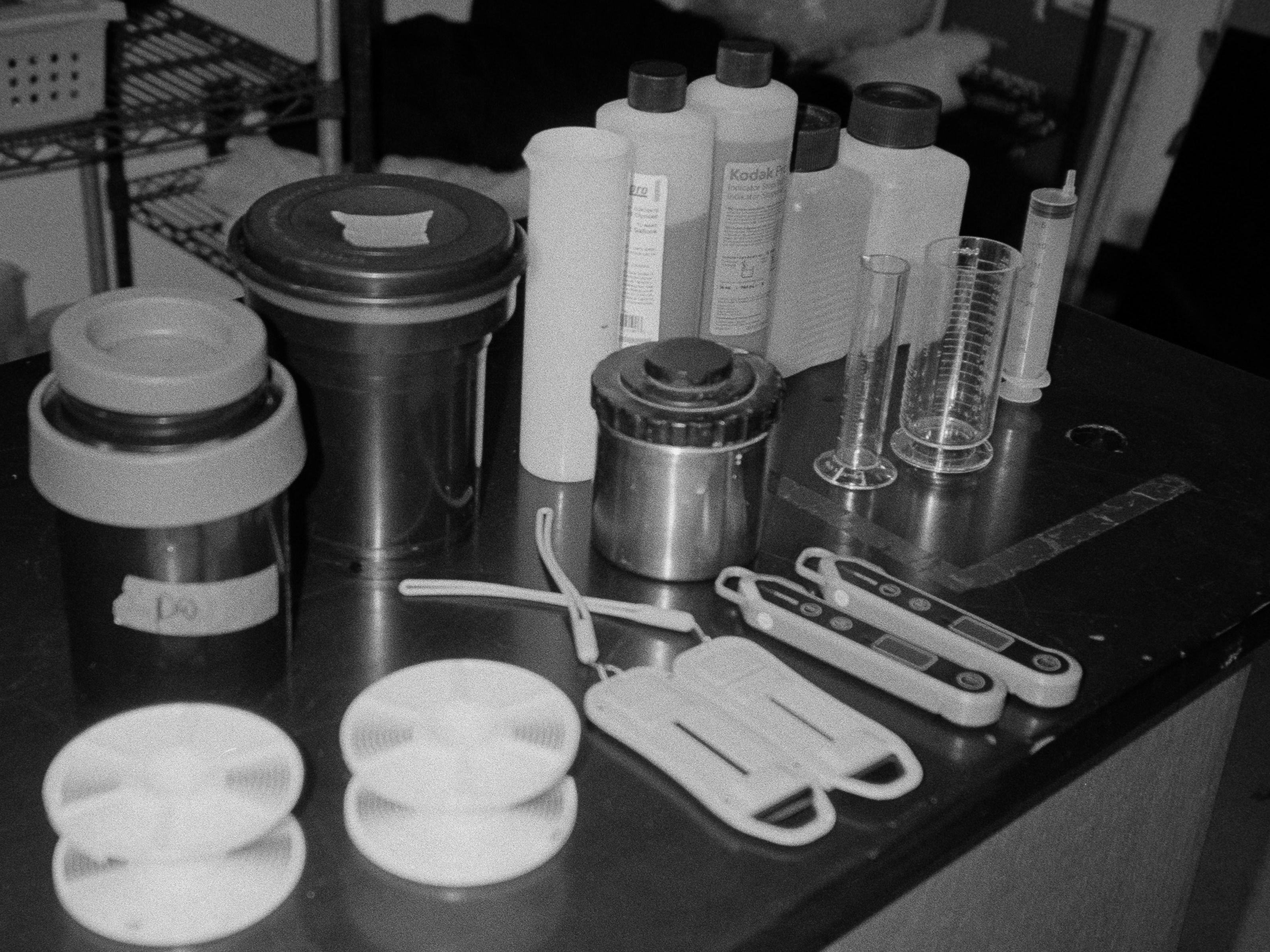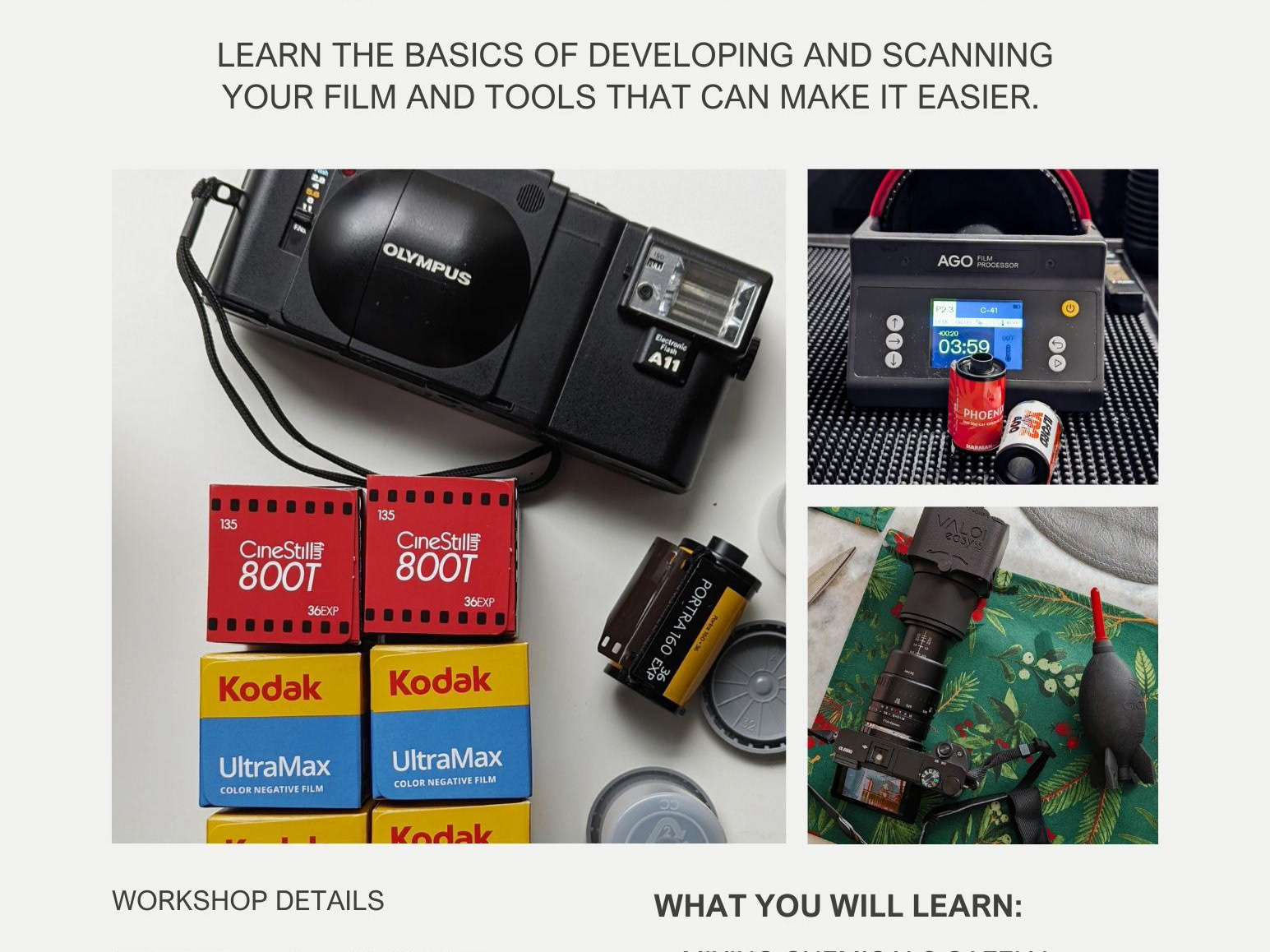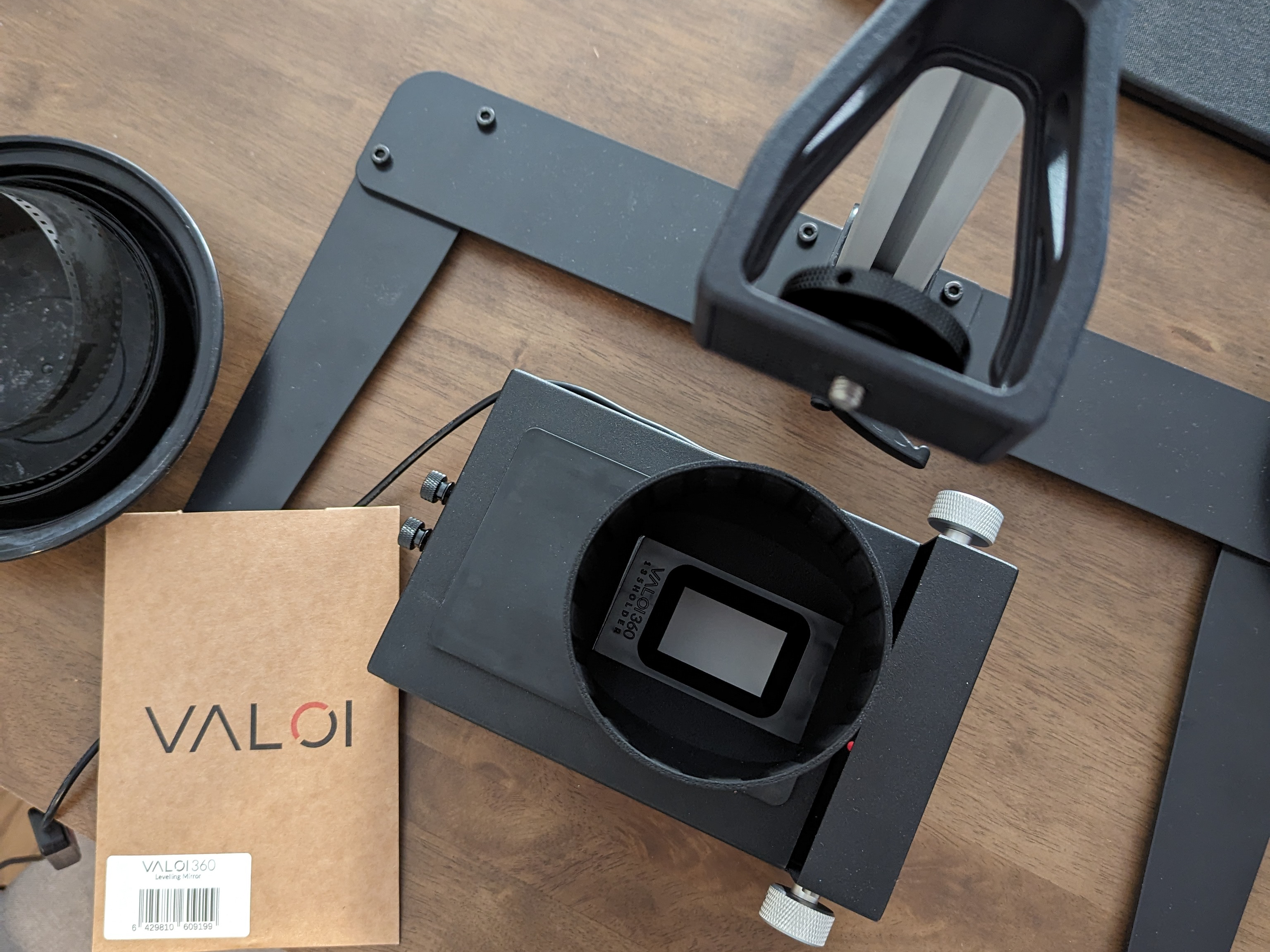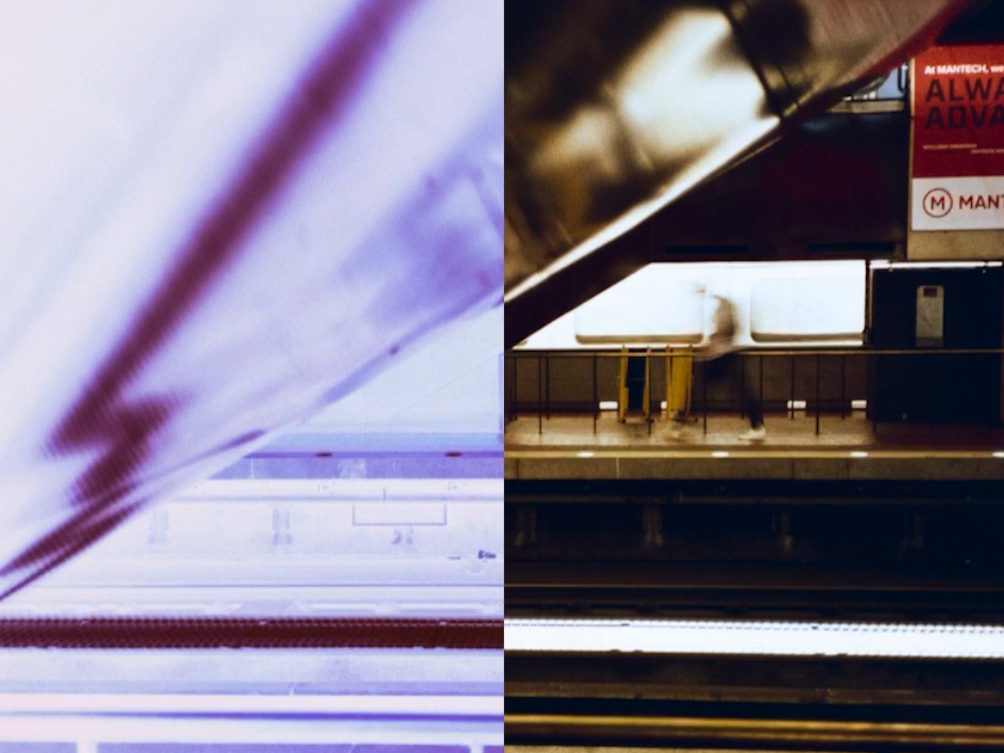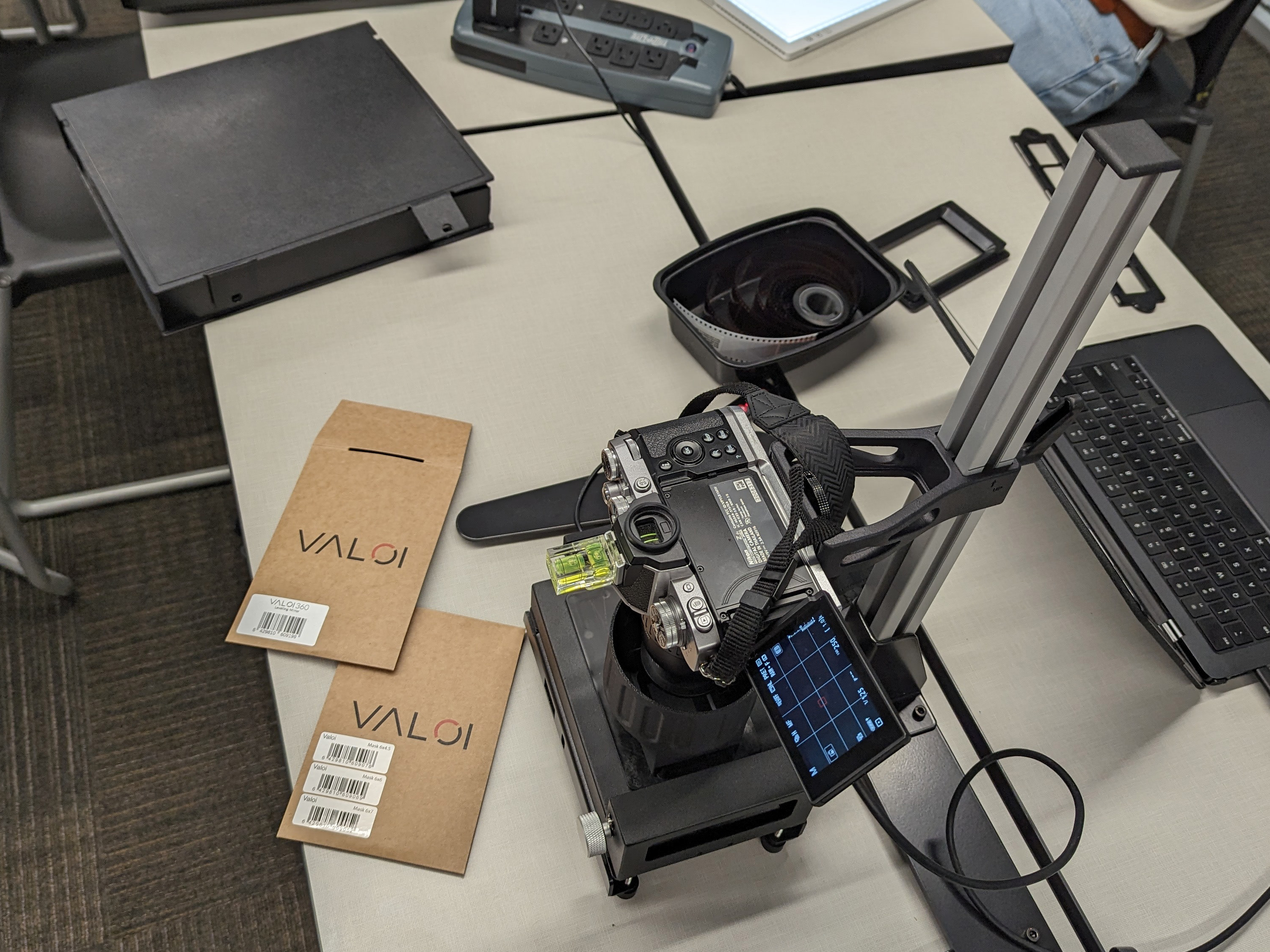Cameras
For camera scanning, you need an interchangeable lens digital camera and a high-quality macro lens capable of reproducing images at a 1:1 magnification ratio or greater in a RAW file format (e.g., .RAW, .NEF, .CRW, .ARW). The camera you choose dictates the resolution, color depth, and dynamic range of the digital files you can extract from your film. Thankfully, almost any digital camera made in the last 10 years will suffice, with diminishing returns on cost once you exceed 20-24MP for 35mm film (i.e. you'll start getting two or three pixels for every film grain, but no actual gain in detail from the image). I only recently added a high-resolution (42MP) camera to my collection, primarily to enhance sharpness for medium format film and allow for tighter cropping during post-processing without needing to re-scan.
Some desirable features to look for include:
- High-quality “live view”: This feature, especially with digital zoom, allows you to see film grain and achieve precise focus while scanning. All mirrorless cameras include this, as do most digital SLRs from the last 10-15 years.
- “Flippy screen”: A screen that flips out, up, or to the side is beneficial for ergonomic setups. It’s particularly helpful when mounting the camera vertically or positioning it horizontally on a table.
- In-camera charging or USB power delivery (PD): If you plan extended scanning sessions, being able to charge the battery or supply power directly via USB or a dedicated cable can save time and effort, especially if the battery compartment is hard to access.
- External manual controls: Having physical controls for settings like ISO, shutter speed, and aperture enhances workflow by reducing the need to navigate menus. Cameras that allow settings adjustments directly on the body or lens are ideal.
Lenses
The most critical factor when selecting a lens is its reproduction ratio. A macro lens capable of at least 1:1 magnification ensures your 35mm film will fill the frame. Higher magnification ratios offer more flexibility in positioning your lens while maintaining critical focus.
Another essential consideration is focal length or field of view. The focal length determines the working distance—how far the camera needs to be from the film to fill the frame. Larger focal lengths (e.g., 60mm) provide more distance, while shorter ones require closer positioning. Striking a balance is key: too close, and your lens might touch the film holder; too far, and vibrations could cause blur due to increased sensitivity to movement.
Additionally, ensure your lens is compatible with your camera and sensor. Lenses designed for crop sensors (APS-C) have a smaller field of view for the same focal length and may cause vignetting on full-frame cameras. Personally, I prefer lenses with a 60mm focal length equivalent on full-frame sensors (40mm on APS-C).
Modern macro lenses from reputable manufacturers are among the sharpest available. Options from Nikon, Canon, Sony, and Fujifilm—even those made in the last 40 years—will work well if properly maintained. Budget-friendly imported lenses are also worth exploring, but check reviews and sample images to ensure quality.
Recommendations for Camera and Lens Combinations
Valoi, a brand I use and trust for film holders, offers a helpful resource page with suggested cameras and lenses for camera scanning. This is a great starting point if you’re adapting your current gear or buying new equipment.
My Personal Cameras + Lenses
The Nikon Zfc is an excellent crop-sensor (APS-C) mirrorless camera (~$950 new, body only) with a 20.9MP sensor. Its design is inspired by the classic Nikon FM series, making it a joy to use. Key settings for exposure are accessible without menus, visible from the top of the camera when mounted vertically. Other Nikon models, such as the Z50, Z30, D500, and D7500, offer similar image quality at different price points.
The TTArtisan APS-C 40mm F2.8 MACRO is an affordable (~$100 new) manual focus macro lens offering a 60mm equivalent field of view. Solidly built with a metal body, it features a clicked aperture ring for easy adjustments. Image quality is excellent, and the lens performs on par with much pricier options. Opting for this lens allowed me to allocate savings toward film stock, such as Kodak Gold 200 and Kentmere Pan 100 & 400.
(No Longer Used) Sony A7R II + Viltrox NF-NEX Adapter + Nikon 60mm f/2.8D Micro AF-D
At the end of 2024, after scanning hundreds of rolls with my Nikon setup, I decided to upgrade my camera scanning kit to increase the maximum resolution of my scans. I spent a few weeks trolling eBay for a deal and ended up securing a good one on a Sony A7R II kit. The kit was filthy, but after cleaning it up and reselling the other components, I was able to get the price of the body down to $500, which was a great deal at the time for that model. For the lens, I paired an off-brand Nikon-to-Sony adapter with the extremely well-regarded (and Valoi-recommended) Nikon 60mm Micro AF-D lens that I picked up for under $100. The Nikon 60mm Micro AF-D not only excels for scanning but is also compatible with my Nikon F-mount SLR bodies, ensuring versatility for future macro projects.
After shooting with the Sony A7R II for a few months, I decided that while it was an excellent option for scanning film, I could benefit from Sony's more recent autofocus technology in my daily photography. I found another great deal on a Sony A7R III kit on eBay and ended up selling the R II to help fund the purchase. Around that time, I also extensively researched the best autofocus macro lenses for scanning. The Sigma 70mm f/2.8 DG Macro Art Lens came in as the top recommended scanning lens for Sony cameras from a number of technical reviewers, beating out Sony's own faster-focusing 90mm option in both sharpness and resolving power. I purchased a "Like New" rated copy from MPB for just under $500, and I have been thrilled with the performance so far.
The two biggest upgrades for this kit versus the Sony A7R II + Nikon 60mm Micro AF-D are the improved live view and the ability to focus by wire while tethered. The combination of focusing by wire and a better live view means I do not have to touch the camera or lens once it is positioned for scanning. This minimizes the jitter that could lead to motion blur in scans, and it also helps me achieve critical focus on the film grain faster, with greater precision. I noticed a difference in my scanning speed and quality immediately.
Learn More
